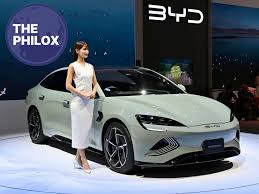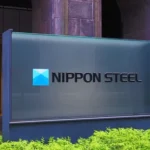China’s electric car price war is entering a fierce new phase. Industry leader BYD recently announced major price cuts—some slashing costs by nearly 30%—on several of its electric and hybrid vehicles. For example, the price of the budget-friendly BYD Seagull dropped to just 55,800 yuan (approx. $7,750), sending shockwaves through the country’s auto industry.
Other top Chinese automakers have started following BYD’s lead, creating a new wave of price competition. Experts say this move is not just about market share—it reflects deep shifts in supply, demand, and economic pressures.
“BYD’s action this time has made the industry rather nervous,” said Zhong Shi from the China Automobile Dealers Association. “Smaller automakers now fear they may not survive this wave.”
The Economic Toll of China’s Electric Car Price War
China’s electric vehicle (EV) sector has been a rare growth engine in an economy struggling with slower growth and weak consumer demand. Beijing has been offering subsidies to boost new energy vehicle sales, but even those incentives haven’t kept up with the growing supply of EVs.
According to Morgan Stanley economist Robin Xing, the price war highlights the supply-demand imbalance in China’s economy. “It shows how deflation is being fueled by oversupply,” he said. “The country still relies on an old supply-driven model, so a true economic recovery remains distant.”
Smaller Automakers Feel the Heat
This ongoing battle isn’t just between giants like BYD and Tesla. Smaller companies, including several state-backed ones, are now at risk. Their survival is under pressure as prices keep dropping and profit margins shrink.
Last week, Great Wall Motors’ chairman Wei Jianjun compared the EV industry to China’s real estate bubble, warning of a potential financial disaster similar to the Evergrande crisis. His concern is that too many companies are chasing market share with unsustainable pricing.
Retail Prices Fall Sharply in Two Years
Over the last two years, the average car price in China dropped by about 19% to 165,000 yuan (approx. $22,900), according to a report by Nomura.
- Hybrid vehicles: down 27%
- Battery-only EVs: down 21%
- Traditional fuel cars: down 18%
Meanwhile, in the U.S., the average new car price rose slightly to $48,699. For EVs, the price was even higher, at $59,255. This stark contrast shows how competitive China’s EV market has become.
BYD Expands Features Instead of Raising Prices
While BYD slashed prices, it avoided cutting costs on its premium models like the Han EV. However, its newer version released in February was still 10% cheaper than its predecessor. In response to the price war, automakers are now bundling more features—like driver-assist systems—at no extra cost.
Zeekr, a Geely-backed brand, announced in March that its advanced driving assistance will be free. Tesla, on the other hand, continues to charge for similar upgrades.
Global Impact of China’s Electric Car Price War
The effects of China’s electric car price war aren’t staying within its borders. Countries like the U.S. and EU are pushing back. The European Union has imposed tariffs on Chinese EVs due to concerns over unfair subsidies. The U.S. raised duties to 100%, making it nearly impossible for Chinese EVs to enter the American market.
Despite these barriers, BYD outsold Tesla in Europe for the first time in April, showing that tariffs may not be enough to slow China’s EV export growth.
What’s Next for China’s Auto Industry?
China’s government has called for an end to destructive business practices, referring to the price war as an example of “involution”—a term used to describe excessive, non-productive competition. But as more automakers cut prices to survive, the price war seems far from over.
Ying Wang from Fitch Ratings expects carmakers to continue using discounts to fight for market share. But with retail sales growing slowly, the industry may need to rethink how to survive in a saturated market.
China’s electric car price war is reshaping not just the local economy but also shaking up the global auto landscape. For consumers, it may mean cheaper cars packed with more features. For automakers, it’s a tough road ahead. For more such updated news, follow 10X Times News.





